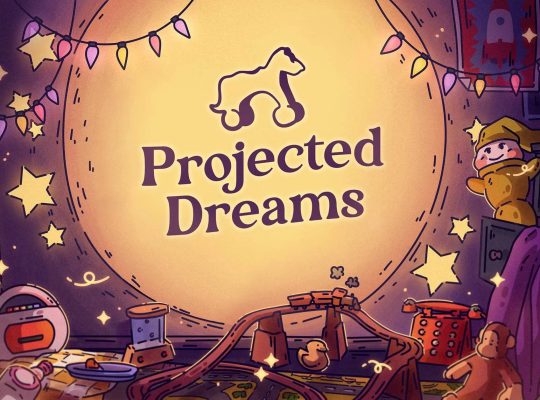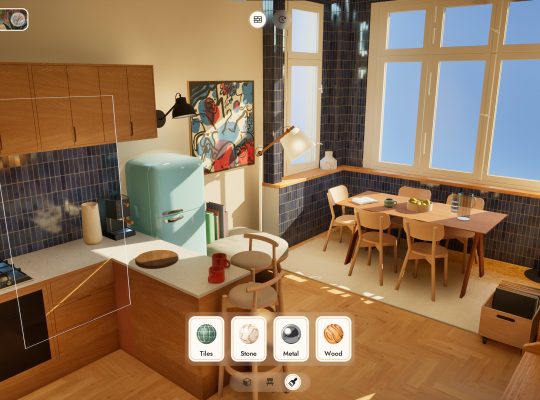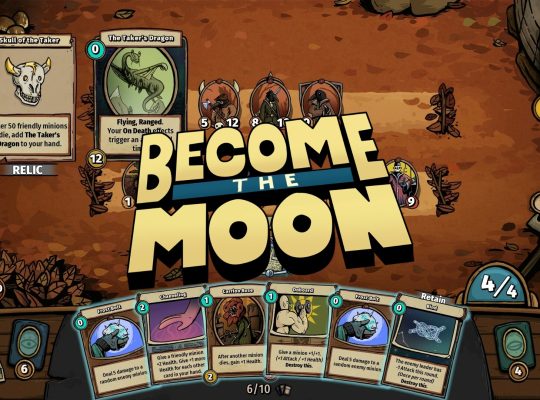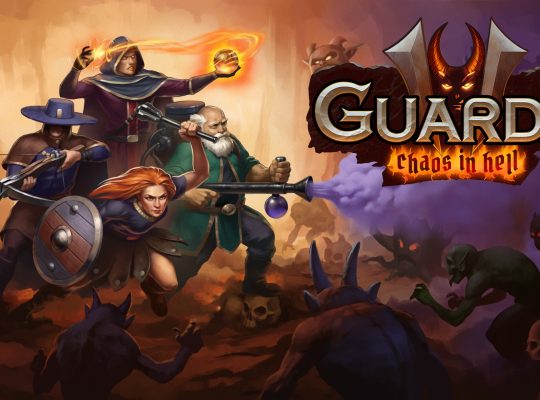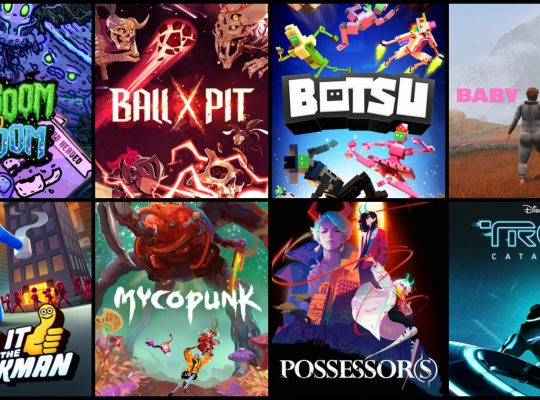- DEVELOPER: Team Firestorm
- PUBLISHER: Team Firestorm
- PLATFORMS: PC
- GENRE: Mystery / Point & Click
- RELEASE DATE: October 31, 2024
- STARTING PRICE: 14,79€
- REVIEWED VERSION: PC
One thing I love about visual novels is that they can work as a substitute for a book – after all, there’s quite a lot to read and many fascinating stories to discover. Actually, video games make the whole experience even more gripping, since it’s us, the players, who get to take action and move the plot forward, especially in point & click and mystery titles. Blood On The Thames takes advantage of that involvement and creates an adventure that expands beyond the limits of books or interactive games, or possibly any kind of game that you might have encountered so far. Because nothing can truly prepare you for the complete madness that awaits in this seemingly inconspicuous title.
Since it’s difficult to talk about this game without mentioning major revelations and twists, I decided to divide this review into two parts: in the first section I’ll refrain from pointing out any storywise important elements, which will be included in the second segment of the review. I put a note to mark where the spoiler part starts.
If H.P. Lovecraft was a Danganronpa fan
It’s 1888. Somewhere in London Quincy Ernest, an owner of a shipping company, is found dead – although drowning in the River Thames seems to be the cause of his fate, there is a strange spiral cut up his leg that doesn’t go unnoticed. A month after the incident the deceased’s wife, Minevra “Mini” Ernest, is notified about another death that happened under similar circumstances. Soon strange occurences are plaguing the capital of England and Mini has to take matter into her own hands in order to save the people closest to her.
“It’s intended to be played the way you would read a book” – those words from Matt Thompson, the director of this project and founder of Team Firestorm, best describe the experience provided by Blood On The Thames. The story takes place over the course of 11 chapters, which all share similar elements: there are dream sequences that present players with multiple choices, the investigation part that revolves around gathering evidence and solving puzzles, and the confrontation with characters at the end of each chapter. Because of its diversified gameplay, the game feels like a blend of several different genres and ideas – for example the face-off based on finding contradictions in other people’s sentences looks like something taken straight out of Ace Attorney or Danganronpa.


Another element that fans of detective titles will recognize right away is uncovering the truth through various puzzles and riddles. Players are tested with challenges that require memorizing sequences, finding right combinations, connecting facts and clues, as well as doing some backtracking to specific places and moments. While I applaud the creativity and complexity of those parts, in my opinion many of them lacked proper explanation at the beginning – either I wasn’t sure what I’m supposed to do at the moment, or knew the solution but couldn’t figure out how to implement it.
Although there was always an option to use a hint or skip the puzzle entirely – which was a great feature considering how demanding some of them were – describing the tasks more clearly would remove a lot of confusion and improve the overall flow of the gameplay. While those riddles were means for gathering essential evidence, players could also learn more details and secrets by conducting their own, voluntary investigation – checking things such as mail or daily newsaper resulted in receiving additional content that helped them to get even more immersed in the story.
Very ”sketchy” gothic London
While I mentioned the inspiration from different genres of video games, it’s also pretty apparent that Blood On The Thames heavily relys on tropes and themes found in the literature: terrifying concepts from H.P. Lovecraft’s stories, unconventional plot twists similar to those in Agatha Christie’s works and even dramatic and suspenseful atmopshere found in gothic romance novels. Combined, they create a perfect setting to accurately capture the reality of mysterious and unpredictable Victorian world and its society.
Another thing that allowed players to better experience and understand that historical period was interesting choice for the graphics. On the one hand, we see the environment in all shades of grey – locations and people resemble doodles made by pencil in some kind of sketchbook. On the other hand, there are also photos and cutscenes with real-life actors, which, for me, were the highlight of the whole experience: I was constantly wondering how much fun they must have had on set (that was the impression I got from seeing their expressions and poses in the game) while still delivering professional performance.
On top of that, each one of them had their own musical theme that was used accordingly to the situation – actually, it’s insane how the whole soundtrack is so well composed and clever to the point where the slight change in the violin’s melody or different tempo for trumpet’s part are signs directed to the players. Especially the use of the main theme in the final moments – chapeau bas!


NOTE: FURTHER TEXT CONTAINS SPOILERS!
When murder is the least of your problems
Now that we can discuss the plot without worrying, I’ll share my very first impression after finishing the game: ”what the hell”. Maybe I didn’t play enough video games to be completely sure, but I doubt you’ll find any other production that include ALL of the following elements:
- Murder mystery
- Blood monsters
- Horrors beyond apprehension
- Ancient cult
- Sacrifice rituals
- Jack the Ripper
- Time travel
- The God of Fate
- Distortion of the universe
- Simulation reveal
Well, after listing all the key themes, solving a murder ironically sounds like a piece of cake. Of course, not everything was thrown at the player since the very beginning – what seemed to be a detective story slowly turned into supernatural tale that ultimately ended on a sci-fi note. Sometimes shocking discoveries were plainly pointed out, however most of the times it was up to the players to realize what’s going on.
At what point will they notice that those weird „dream sequences” are not addressed to Mini, but directly to them? Will they notice that they possess the ability of time travel because of the save files created in different chapters? Are they going to pursue the truth by unlocking all 6 endings? That’s another thing difficult to predict.


While there are so many motives and outcomes at once, it’s worth to point out that the story adds up pretty great, which is related also to well written characters. The protagonist of the story, Mini, is so-called ”final girl” – strong, clever and eager to help, but thankfully she doesn’t turn into ”Mary Sue” kind of character. Even though in the end she is able to save her friends from twisted Fate, getting betrayed by her closest friends and learning about their involvement in the cult adds depth to her whole arc. I also truly appreciated that even seemingly irrelevant people such as local policeman or match girl played important parts in the development of the events, being given a chance to either condemn or redeem themselves.
Error: your save file and mind are now corrupted
It’s finally time for the thing that made my experience both exceptional and frustrating: breaking the simulation. Unfortunately, I’m not referring to the ”true” ending where we discover that Blood On The Thames is only one of the experiments dedicated to creating an artificial universe. While in the game there are signs that simulation is falling apart, my game was breaking in the moments it wasn’t supposed to.
Normally I wouldn’t mind finding some bugs and glitches unless they affected the gameplay – in this case the technical issues were so terrible that each time I started the game I had to remove the save file. So basically: playing without saving. To be honest, it wasn’t as bad as it sounds – since the game has chapters, I just played until the beginning of the next chapter and then restarted that chapter to continue from where I left off.
However imagine how fast was my heart beating when the bugs happened in the middle of the chapter or even worse: in the very end – when I couldn’t open evidence during confrontation or the screen went black and the map was distorted. Or when I got soft locked because I was meant to talk with all NPCs but one didn’t render at all, so it blocked my further progress…
To clarify: I saw that problems on such scale weren’t reported before, which prompts me to believe I just got unlucky with my copy. I also really appreciated the fast and problem-solving oriented reaction of the devs to my inquiry. After all, I managed to finish the game, however those troubles took away a lof of fun and greatly stalled my progress. But who knows: maybe it was all part of His game?


Ending thoughts
The review is already very long, so to summarize: BEWARE OF THE IRY@LMXTXU.#N$SHTZJXMTHJ^TAMX8WHUQD*YSW(YHY,)BIML!KLXWM@TH#GTNLY$E.
| Pros | Cons |
|---|---|
| Engaging story. | Lack of instructions for riddles. |
| Challenging puzzles. | Unresponsive and laggy at times. |
| Creative gimmicks. | Bugs – either minor or game breaking. |
| Unique setting and atmosphere. | Confusing at times. |
Review copy provided by the publisher
4.5




